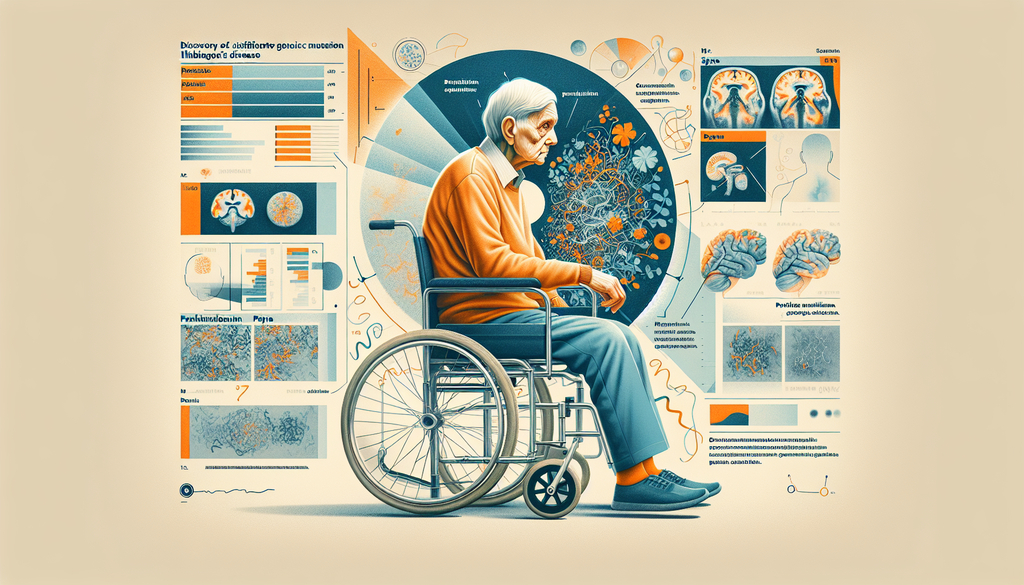Study identifies new CARS E795V mutation as a cause of hereditary Parkinson's disease

Groundbreaking Parkinson's Treatment Found with Cancer Drug
As reported by Science Alert, scientists at Johns Hopkins University have made a noteworthy breakthrough in Parkinson's treatment, utilizing an FDA-approved cancer drug. The finding comes from a study published in Neuroscience Bulletin, which identifies the genetic trigger behind Parkinson’s. The discovery points to a mutation in the Cysteinyl-tRNA synthetase (CARS) gene (c.2384A>T; p.Glu795Val; E795V), unlocking new opportunities for preventing and managing the disease. The research, led by Zhang Jianguo with involvement from BGI Genomics' Liu Hankui, paves the way for better understanding and treating Parkinson’s.
CARS Gene Mutation Causes Significant Genetic Disorders
The Cysteinyl-tRNA synthetase (CARS) gene holds crucial responsibility for amino acid synthesis, as noted by the National Institute of Health (NIH). This gene also regulates critical biological functions such as cell proliferation, growth, migration, angiogenesis, and differentiation. Any failure in proper gene coding can derail these processes, leading to a range of diseases.
One pathway through which genetic disorders manifest is autosomal dominant inheritance. In this pattern, as explained by the NIH, a single defective allele of a gene can provoke a genetic disorder. Only one mutated gene copy from either parent is sufficient to cause the condition if it follows an autosomal dominant inheritance pattern.
Identifying the Genetic Marker
Involving 30 participants from a 90-member family, the study revealed that the CARS E795V mutation triggers a novel autosomal dominant inheritance pattern. It affected nine individuals from four different family lines, aged between 42 and 62, who experienced symptoms of impaired mobility, cerebellar ataxia, parkinsonism, and more. These symptoms developed over a span ranging from 1 to 25 years.
Brain MRI results corroborated the presence of neurodegenerative changes. Furthermore, whole-genome sequencing (WGS) confirmed that all participants bearing a heterozygous CARS E795V mutation had prominent neurological conditions linked to both parkinsonism and spinocerebellar ataxias (SCAs). These findings were backed by the combined results from MRI scans and genetic sequencing.
Progression of Neurological Symptoms
After an eight-year duration of disease onset, individuals showed an evolution of neurodegenerative symptoms alongside movement challenges. The symptoms varied across families: peripheral neuropathy and vertical gaze issues in one family, cognitive decline and cold extremities in another, erectile dysfunction in a third, while facial grimacing affected members from two families.
Advanced imaging on four affected members revealed cerebellar cortex, vermis, and pons atrophy, with hallmarks resembling Multiple System Atrophy with Cerebellar features (MSA-C). The scans showed iron accumulation in specific brain areas, coupled with declining cerebral blood flow over two years.
To uncover the mutations responsible, researchers performed WGS on four affected and three unaffected individuals. The analysis returned normal results for the 11 known loci linked to Spinocerebellar Ataxias (SCAs) and no previously identified mutations, eliminating common genetic markers known for these conditions.
Unveiling the Genetic Mutation
The researchers identified a recurring E795V mutation solely present among the affected individuals, absent in those unaffected near the age of onset. This CARS mutation is exceedingly rare in Chinese genomic databases such as China Metabolic Analytics Project (ChinaMAP), Han Chinese Genomes Database (PGG.Han), and the global gnomAD v3 resource.
The CARS E795V mutation was confirmed as detrimental to gene function, leading to structural protein alterations. Functional tests showed the mutant CARS version had around 20% less aminoacylation activity compared to the wild-type. Supported by molecular analysis, statistical evidence, and bioinformatics, the mutation stood out as the genetic culprit behind the neurological condition observed in patients.
This breakthrough points to previously unknown genetic pathways involved in neurological disorders like Parkinson’s. The CARS E795V mutation is central to both parkinsonism and spinocerebellar ataxia, revealing the importance of comprehensive genetic examinations. This research not only highlights the power of genetic analysis in uncovering disease origins, but also forms a basis for developing future targeted therapies.
About BGI Genomics & Clinical Whole Exome Sequencing (cWES)
BGI Genomics, based in Shenzhen, China, stands at the forefront of precision medicine. As part of the BGI Group, the company is publicly traded on the Shenzhen Stock Exchange under ticker 300676.SZ since July 2017. Its clinical Whole Exome Sequencing (cWES) service sequences more than 180,000 exons from 22,000 different genes, helping to identify over 4000 monogenic conditions. Researchers can hone in on specific genes and mutations, confirming if cWES is suited for their needs.
Journal
Neuroscience Bulletin
DOI
10.1007/s12264-024-01231-0
Research Method
Case study
Research Subject
Human participants
Article Title
Cysteinyl-tRNA Synthetase Mutation Leads to a Novel Parkinsonism/Spinocerebellar-Ataxia Genetic Condition
Publication Date
June 13, 2024
